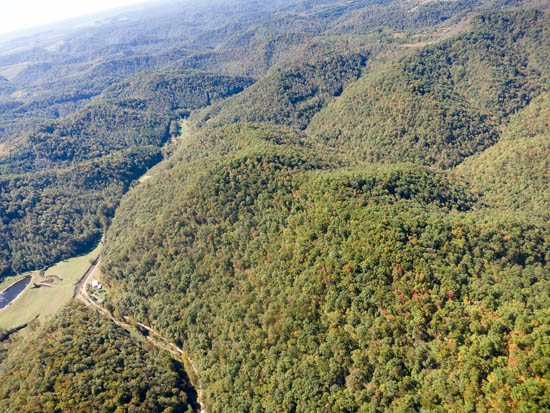Forests offer sustainable economic hope for Eastern Kentucky
Forests offer sustainable economic hope for Eastern Kentucky

Published on Mar. 4, 2015
Forestry and the forest industry represent a viable option for sustainable revenue in Eastern Kentucky. That was the conclusion of a recent University of Kentucky study of 54 Kentucky counties for the Shaping Our Appalachian Region, or SOAR, initiative.
The study, conducted by extension specialists in the UK College of Agriculture, Food and Environment’s Department of Forestry, determined that the timber-based forestry sector could provide about $1.5 billion in additional direct economic contributions and result in 7,498 jobs. If induced and indirect contributions are factored in, the economic contributions could rise as high as an additional $2.3 billion.
The analysis factored in only existing forest industries, the expansion of those industries and the potential for new industries that could use existing low quality, under-utilized forest resources. Though not included in the report’s overall figures, the study was sensitive to maintaining the capacity to generate revenues from non-timber activities such as ecotourism, hunting and maple syrup production. It was also sensitive to overall ecological and landscape concerns. The researchers’ analysis was based on sustainable use of one-half of the annual forest growth that is currently not being harvested. They took into account the use of current logging residues and degraded timber as well as the potential to fully process wood products in the region.
In many of the counties analyzed, forests account for more than 80 percent of the land base.
“Being a renewable resource, woodlands have great capacity, if properly managed, to provide sustainable economic and social benefits,” said Jeff Stringer, extension professor and lead investigator for the analysis.
The $2.3 billion in economic contributions represents only 18 percent of the total annual contribution to Kentucky’s economy that the forest industry provides. Coupled with current forest industry contributions over time, the total could rise to $4.9 billion and more than 29,000 jobs.
Stringer concluded that the overall increase in forest industry would improve the economic vitality of businesses and services directly supporting forest industries, such as transportation and parts distributors. Causing a ripple effect, a more robust forest industry will also contribute to the health of other nonforestry sectors such as health care, rental/housing, petroleum, and retail and wholesale trade.
“What will propel the growth is better utilization of the forests that are already being harvested,” Stringer said. “There is a large amount of material left in the forest, because it’s a lower quality or a lower grade. We have the ability now to pull that material out when we do a timber harvest and use that under-utilized resource. Fortunately, we now have sustainable forest and harvesting guidelines that will allow us to do this properly. This is a key factor for sustainable use of the forest; without it we risk abuse.”
Throughout the counties studied, 12 percent of growing stocks can be designated as grade 1, trees that are sound, straight and have a minimum number of branches and defects. Such trees go into the production of high valued products, such as veneer, stave logs for whiskey and wine barrels, and quality grade lumber. Below-grade and grade 3 trees, which make up 64 percent of the area’s forests, are only capable of producing low-valued products, though some have significant nontimber values, such as wildlife habitat. Fire-damaged, rotten or crooked trees that have been left in the forest because they’re unmerchantable fall into this category.
“To make this work, you’ve got to have markets available for a landowner,” Stringer said. “Having markets for not only the good trees but the bad trees, puts money in landowners’ pockets that they can then use for forest management. Markets, however, can be a two-edged sword. Management, not markets, has to guide the decisions made in the woods.”
The study emphasizes that sustainability is one of the key components to success.
“If done correctly, the forest has significant long-term sustainable values for the region,” Stringer said. “It’s a renewable resource. It’s going to be there forever if managed correctly, and part of the economy in that part of the state can be generated in perpetuity if done right.”
The report is available at http://www.ukforestry.org.
Community Development Environment Extension Forestry


